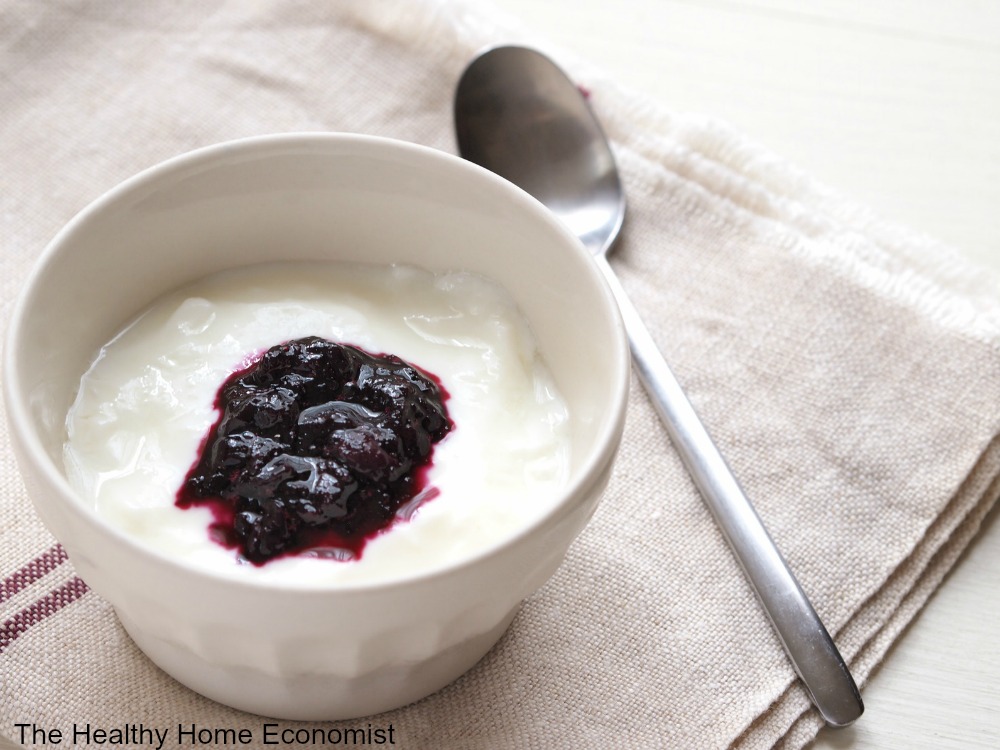 If you’ve watched even one of the videos from the 100+ Real Food video library available on this blog, you probably know that I have a microwave in my kitchen.
If you’ve watched even one of the videos from the 100+ Real Food video library available on this blog, you probably know that I have a microwave in my kitchen.
Do I use it for cooking or heating anything that my family consumes?
No. I haven’t used a microwave to heat or cook anything in many, many years. I much prefer my small countertop convection oven which doesn’t heat food unnaturally and creates carcinogens like a microwave does.
Why don’t I just remove the microwave from my kitchen then? The truth is that the microwave can function as a handy airtight cupboard and proves quite useful for other tasks besides cooking and heating believe it or not.
I mentioned in one of my Real Food videos that I frequently use it for airtight, room temperature storage of freshly baked bread, cookies, and other baked goods.
It also works very well for making homemade raw yogurt. It is, of course, made from unpasteurized milk.
What about Greek yogurt? Is Greek yogurt better? How about the similar German style cheesy yogurt known as Quark? While not necessarily healthier, if you make it yourself allowing sufficient time for probiotic inoculation, these are certainly a nutritious choice! It is ultimately a personal preference as long as the yogurt is fermented properly.
If you don’t have access to raw yogurt, whether regular or Greek, then you don’t know what you’re missing. Pasteurized yogurt even if organic pales in comparison to the digestibility and nutrient value of raw yogurt, so if you are able to snag some raw milk from a local farm, here’s how to make it into raw yogurt.
While the recipe below works fine using the microwave as the incubator, yogurt made in a slow cooker is more dependable in texture.
*This helpful recipe idea was given to me by my friend Cynthia Calisch, who has passed away. May she rest in peace.

Raw Yogurt Recipe
How to make raw yogurt using the microwave as the perfect incubation unit (turned off). When raw, yogurt has a pleasant drinkable style texture compared with scoopable heated yogurt.
Ingredients
- 1/4 cup Plain, whole milk yogurt preferably organic and grass-fed
- 3 3/4 cups Raw cow or goat milk preferably grass-fed
Instructions
-
Scoop 1/4 cup of the plain whole milk yogurt into a clean, wide mouth, glass mason jar (I like these). After you've made raw yogurt one time, you can use your own raw yogurt as the starter for subsequent batches.
-
Warm the raw milk on the stove to between 105 - 117F. No enzymes or nutrition is lost heating to this temperature but the warmed milk enables the yogurt culture to "take" better than room temperature raw milk.
-
Pour about half a cup of the warmed milk into the mason jar and mix with the yogurt.
-
Pour the remaining warmed milk into the mason jar, stir and close the lid tightly.
-
Wrap the mason jar in a thick hand towel, secure with a rubber band and place inside your microwave closing the door. Leave the light in the microwave on to keep a bit of warmth inside.
-
In 24 hours, open the microwave and voila! You will have yourself a lovely quart of raw yogurt!
More Information








We use ours for storage and for heating up neck warmers in winter. I like the idea of a moist place to let bread rise. It’s time to make yogurt, and I will give this a try!
After heating to 105-115 and wrapping and stuffing into a microwave with the light on, what is the temperature at which the yogurt should stay for the 24 hour period? I have tested my microwave’s light with a jar of water started at 110F with a candy thermometer in it, and it seems to level out at 85F. Is that a high enough temp?
75F in the morning. It’s winter here (the snowy kind ;)) and I can’t find a place warm enough in my house. Heating pad? Crock pot?
http://simplyhomemaking60.blogspot.com/2011/02/easy-yogurt.html
Got rid of the microwave long ago. Noticed your’s but glad you clarified this cause now it makes sense.
After reading all comments above I have to conclude that most people don’t read the post, or simply don’t understand what they read and then jump to comment “something” just for the fun of it. Too bad!
Thanks Sarah for all your great post!
I am just getting ready to make my first batch! Thanks for the simple recipe!
PS: I knew when I read the headline story I knew you meant it to use as storage(before even reading the article), not as using a microwave. If anyone has seen your video should know you do not “use” your microwave.
microwave bad bad. destroy’s food. cant imagine using it on something that’s suposed to be so good for you.
you should read the article.
read the post – she never turns the microwave on
awhile ago i was in the kitchen thinking about ditching the microwave and after i discussed it with my husband i went to use it (i think i was just curious to see if it was still working) and it had stopped working! buttons all worked but press start and only the light turned on! What a weird series of events ^^
Hello?! Why didn’t I think of this? I have a unused microwave above my oven and I purposefully didn’t start my yogurt today because I’ll be using the oven tonight. My little yogurt maker is wonderful, but can’t do big mason jar batches. By the way, I noticed a few times when I forgot to turn of the yogurt maker or the oven light turned off and the yogurt sat at room temp for hours before the light or maker got turned back on, the yogurt resulted in a nicer thicker consistency. Also I actually use VSL#3 unflavored probiotic as my starter and it still turns out great without heating up. I just put some in my 1/2 gallon of milk shake it up and pour into mason jars. VSL#3 is expensive, so making yogurt out of it stretches it.
We just moved recently and left our above range microwave.behind. Havent used it.in a long time. I have tried making it in my crockpot recently and it came out great. Only problem the recipe calls for the milk to be heated to around 180 first then cooled to 115 to 120. When it cools down is when to add the culture. Im thinking that maybe skipping the step of heating it to 185 might work with the crockpot? To maintain the temp I cover my crock pot with a double folded bathtowel and turn the pot on low every couple of hours for about 15 minutes.
Mine’s a fermenting incubation cabinet, timer, and vent fan. It’s a pretty handy appliance when it’s not killing your food. 😉